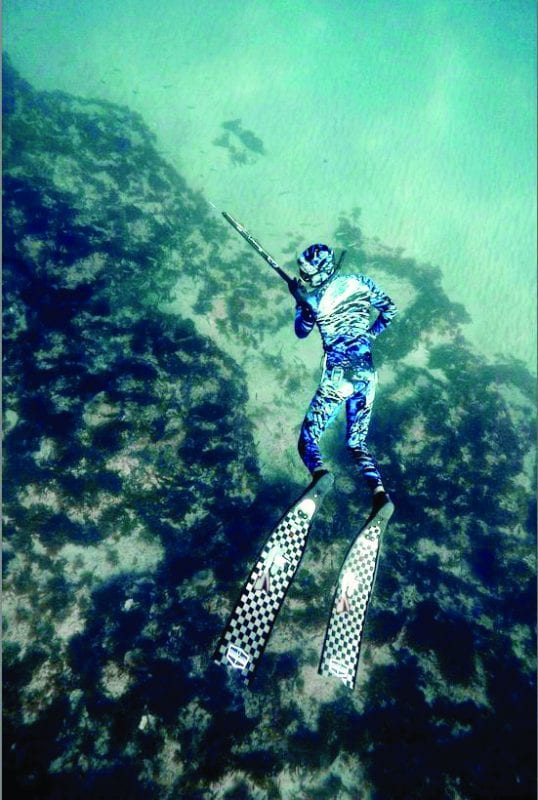Before you buy or borrow freediving gear, here are the items in a freediver’s bag and what you need to know about them.
Mask
Freedivers use a low-volume mask. There is less space in the mask for air, which means there is less mask squeeze from increasing pressure while descending and a more streamlined design to limit drag. Each face is different, so don’t be discouraged if it takes a few masks to find the perfect fit. Don’t settle for a leaky mask! And remember, with all new masks, put a lighter’s flame to the inside of the lens to remove the factory film from the glass. Wipe it clean, and presto… your mask is much more fog resistant!
Snorkel
Freedive snorkels are straight J snorkels with no splash guards or purges. This design allows full, unhindered inhales and exhales. Clip your snorkel to the back of your mask strap with a z
Wetsuit
Your wetsuit is your shield against cold, heat, jellyfish, sharp reef and other oceanic irritants. Even if it’s warm, wear a thin wetsuit or rash guard. I rarely dive without at least a 1.5mm suit. There are two types of suits, open cell and closed cell. A closed cell suit traps a thin layer of water around your body, which warms the water to body temperature. Open cell suits create a watertight seal and are typically used for colder water. I recommend a 1.5mm closed cell for warmer climates and a 3 to 5mm open cell for colder water.
Fins: Freediving fins are typically two to three times longer than snorkel and scuba fins. They come in plastic, fiberglass and carbon fiber. If you are just getting into freediving, plastic is the most durable and affordable option. Carbon offers the best performance. Fiberglass has twice the performance of plastic and a price tag lower than carbon. Make sure your footpockets fit perfectly. If they are too loose, you will lose power. If they are too tight, you will get foot cramps.
Freediving Gear: Weight Belt
Properly weighting yourself is extremely important. The best test is to do a relaxed exhale at the surface with all your equipment and your belt on. You should comfortably float at the surface after the relaxed exhale. It’s always better to be under-weighted than over-weighted. Blackouts are a real danger in freediving, and having too much weight can be fatal.
My favorite dive shop has offered a discount to all readers of this article! Shop at www.frontlinefreediving.com with the promo code HascupHunts to save big time on a new setup. They have all the knowledge to get you in properly fitting gear the first time.
Sean Hascup is a spearfishing and travel guide at Hascup Hunts International. See his advantures online or find out more about freediving gear at www.SpearfishingGuides.com, Facebook.com/HascupHuntsInternational and Instagram.com/Blood_Sweat_And_Spears. Email him at HascupHunts@Gmail.com.
By Sean Hascup